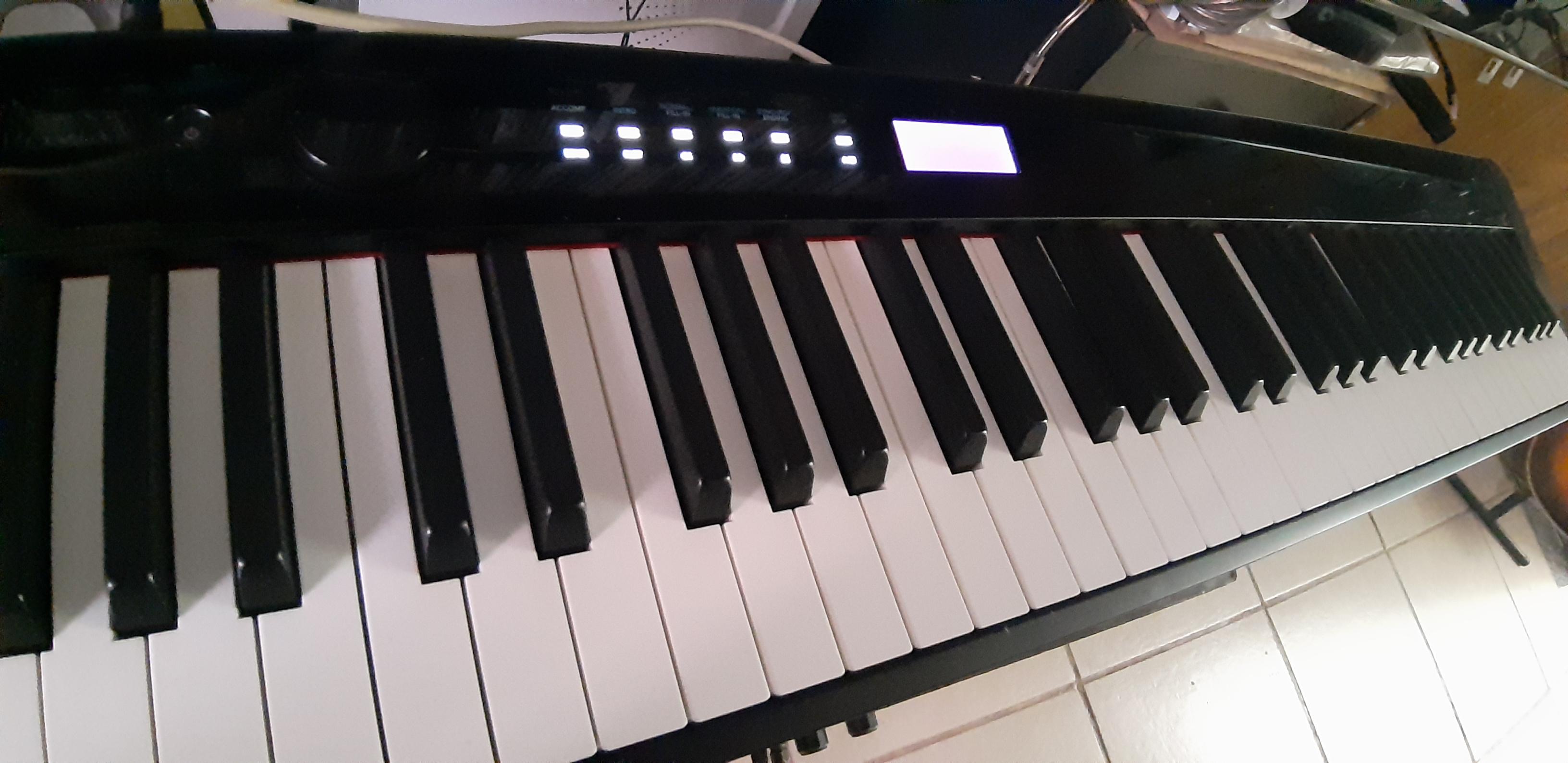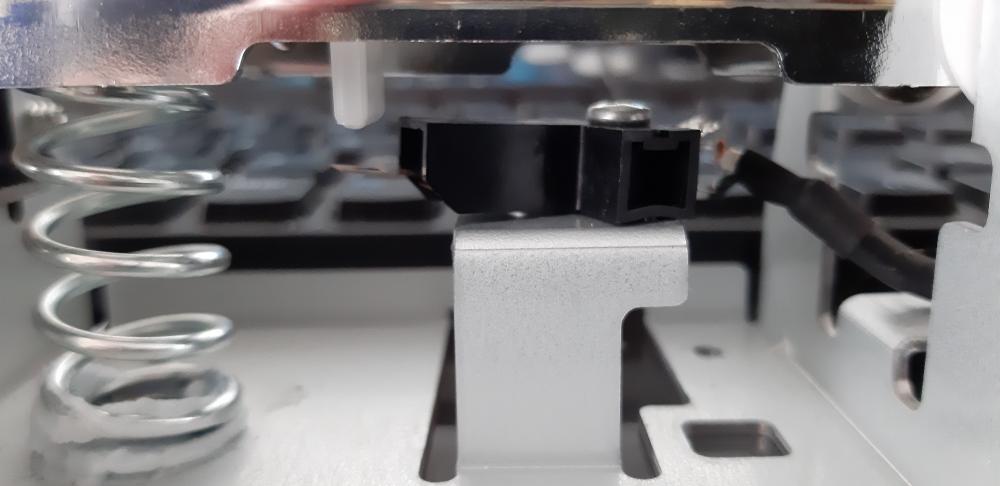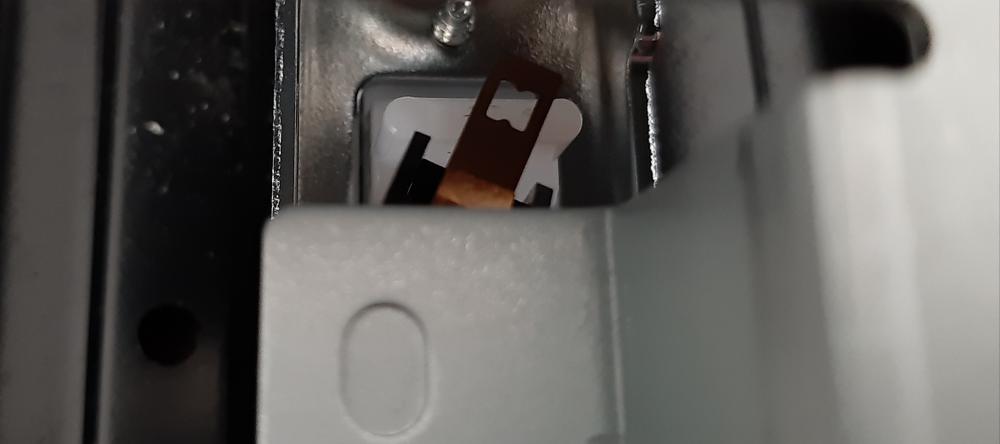-
Posts
20 -
Joined
-
Last visited
Recent Profile Visitors
472 profile views
DJ_Maridao's Achievements
-
Hi, Lauren77! I must disagree with colleague Brad (I'm so sorry, Brad) but yes there is a possibility. This task can be easy or complicated depending on how your Yamaha pedal (model) was built. In my case, I bought the FC4A some time ago because I was using it with an old Yamaha keyboard (PSR510) and until then everything was fine. I didn't even know there were these differences between pedal manufacturers. In fact this proprietary market policy it sucks! Then I acquired the PSX3000 and discovered the problem, or "treta", slang that we use here in Rio (Brazil). Well, I'm going to send U two pictures to check how I changed my pedal. U basically need to do two things. One and the most important and delicate is (after U disassembling the pedal) with the help of a nose plier U need to make a small and smooth "fold" (very careful with this or you will damage permanently the switch) to separate the switch contacts, which in the case of Yamaha, it come from factory already in contact and the pedal movement is just the opposite. When pressing the pedal separates the connectors. The second is to turn the switch upside down so that when U pressing the pedal the part of the larger connector makes contact with the smaller part while the pedal is pressed. U can and must use the same hole and screw to secure the switch on the pedal. Please, note in the picture 092017 "the angle"! It needs to be this way or the pedal will put a lot of force on the switch, clogging it and closing the contact. This angle allows the pressure exerted on the switch not to bend the contact just softly touches it. As I mentioned earlier, these instructions are based on the FC4A and may vary according to your pedal assembly. See the photos and tell me if you have any questions. I hope this point U in right direction of action.🙃 P.S.: I wouldn't get rid of this pedal, or have to sell it just because of the infamous planned obsolescence.😡
-

Classic Minimoog 1970's sound on PX-S3000
DJ_Maridao replied to Patrick Doyle's topic in Privia PX-S Series
Dear Patrick, I already mentioned here on the forum that when I bought the PSX 3000 the idea was to buy a digital piano and as such we should not expect much from features that are from a synthesizer, especially when we know that Casio has no update on the way about improvements that will meet some needs such as new tones or the possibility of importing / exporting tones. But ... Searching here and there I tried to get close to that solo timbre presented in the video posted by mike71. As you may have noticed, the timbre is in unison and has a portamento control, easily noticed when the solo ends. The only timbres I found that were recorded as unison are from the Others category of numbers 215 and 261 respectively. What I tried was to place the 261 in two layers with different octaves and change the portamento a little by the knob 07 configuration. Also, you can't do much except connect the PSX3000 to a computer or tablet that has a Moog VST. Hug! -

Using Korg Module Pro app with Casio PX-S 3000
DJ_Maridao replied to Fujiman90's topic in Privia PX-S Series
HI, Fujiman90! U can do this as well with the knob control K1. To do that To do that touch the Function button and navigate to the third section "DSP, TRANSPOSE, KNOB, ARPEG., SPLIT, LAYER". Touch the Knob button and using the "- +" buttons navigate to option "12 :Kbd/Acmp Vol." The knob K1 will control the volume of the Keyboard. As a DAW user I like to use this technique because it is faster than accessing the function menu pages and you can even save this knob configuration in a bank making the use of the Korg module even faster. Hug! -
Hello everyone! Yes, the auto resume function also saves the parameters defined in the knobs. For a better view of how these "tools" can or should be used, it is based on a hierarchy. Parameters and settings can be saved into a Registration Memory, the Registration Memory is saved into a bank, and the Auto Resume function takes a snapshot of how the PSX was before it was turned off. There are settings that cannot be saved to a Registration Memory. It is always healthy to read the manual to understand these details as they make a big difference in the day-to-day use of the PSX. But a strange detail that I noticed and that is not clearly mentioned in the user manual is that some settings (I don't know if all) are saved even if the Auto Resume function is turned off. Example: Auto Resume function = off; 1st Registration Memory (area 1) on Bank 01 selected; LCD Contrast set to 13; Change to bank 24 and save in area 1; Turn off PSX. When I turn on the PSX again, even before it finishes the tests on the leds on the right side of the LCD screen, the LCD Contrast function is changed to the value I saved earlier and the PSX returns to bank 01. The detail is that the "method" I used to save this configuration was in area 1 of bank 24. The PSX saved this configuration even with the Auto Resume function turned off. Go figure!!! 🤔
-
Hi David! I loved the cover! If it is not an abuse on my part, is it possible that you could ask your daughter for the template or model of this cover? Sorry, I don't know the correct word in english for this. Perhaps the measures can already help. Thanks!
-
Ok, guys! My strings was complete, at last! Waiting for approval in my profile to share the .rbk file, ok? Thank U ALL!!!!!
- 14 replies
-
- stereostring
- eq
-
(and 4 more)
Tagged with:
-
Version 1.0.0
50 downloads
Hi! After a few days of an intense researching and brainstorm with the forum colleagues about how to "sculp" the almost perfect, or as close as could get, this is my cute, softly and intense modification strings tone. The tone is in the first area of the bank. The other ones it's just saw's to play... Enjoy!-
- strings
- real strings
-
(and 2 more)
Tagged with:
-
DJ_Maridao started following Mike Martin
-
Ok Brad, but let's put aside the "corporation speech"... (Just joking.... 😇) I understand that I bought a digital piano and I feel very glad about it. The changes! A new culture, a new experience! The real piano timbre, five octaves to seven, speed keys to heavy keys, the muscle re-education that involves this and so on... I understand all this in a first place, of course! But when the "device" goes to another horizon and brings to you so many other possibilities that you didn't have before the first thing you do is desperately jumps into that pool of colors and flavors never tasted before (poetic isn't it? 🙃) and because of this any "problem" that comes ahead makes you so frustrated... In my case was something that stop me to achieve my "independence" in not having the need to bring with me a computer and all the necessary devices to have access a timbre or preset of some instrument in a plugin software that my own physical instrument should have. And in this particular case, the stringssssss! Well, I don't have a clue if it was or was not your intention but you help me. While we was changing quotes here and there an I tried the 008 :SlowStrings1 and I discovered with some experimentations that the tone have no bass mixed with the tone sample! 😁 With the knobs settings (brilliance, filter, attack) and the 006 DSP with some adjustments in the 3 eq's I have achieve almost I need to make the string sound more real to me. Thanks a lot! 🤝 -
- 14 replies
-
- 1
-

-
- stereostring
- eq
-
(and 4 more)
Tagged with:
-
My dear, With this sample 007 (instrument = sample) the things is get worse... If I try to put zero attack (K1 all the left) the sample continues with a slow attack. One more time I believe that the problem is in the built way... Getting worse, if I try to reduce more and more the attack level I cannot hear the string sample... Just the f**** bass. Try it yourself and tell me... Assuming you have an PSX3000. 😭
- 14 replies
-
- stereostring
- eq
-
(and 4 more)
Tagged with:
-
HI, Brad! The first one of the Strings section. :StereoString
- 14 replies
-
- stereostring
- eq
-
(and 4 more)
Tagged with:
-
I hope the "noise" that I (or we) making can be a motivation for them (Casio) to understand that since we can't import samples, at least they can improve the ones that already exist and allow us to update them. Let's pray!
- 14 replies
-
- stereostring
- eq
-
(and 4 more)
Tagged with:
-
Yep! Indeed!
- 14 replies
-
- stereostring
- eq
-
(and 4 more)
Tagged with:
-
HI! About your question, in all cases. The problem is (I believe) the sample and the way it was built. Capturing the real sound, mixing, etc... Thanks!
- 14 replies
-
- stereostring
- eq
-
(and 4 more)
Tagged with:
-
Yes, man! I can hear the terrible sound in some notes above the D4. I believe that the purpose maybe was make the mid range frequencies more "punch", or something like that but never in lower frequencies. I believe too that a string timbre could never have something like this for the simple fact that it looks horrible! And we all already know that music, in the essence of the word, is pure feeling, where this feeling is slaughtered when "something" that shouldn't be part of a whole presents itself in this way. If U saw the movie "Red Dragon", at the very beginning, knows perfectly well what was the end of the poor flutist musician ... Jokes aside, I do not believe that a company that spends a very amount of money in a search of quality would agree with an act of this nature to make the timbre more "real" to the physical instrument. This is terrible because you cannot use the harmony of the dissonances involved in a musical piece with a string instrument to create something without having to be aware of this "synthesis of hell" in the middle of the timbre. I sent a message to Casio support asking about it and quoting this post, even knowing what the answer will be ... Sending the file.... PSX3000 stereostrings sample.mp3
- 14 replies
-
- stereostring
- eq
-
(and 4 more)
Tagged with:
-
Hello guys! I discovered something not very pleasant about the issue of equalization. Using the envelope knob I ended up with something scary ... For that I used the attack control (K1) at its highest possible value and adjusted the value of the release control (K2) to zero. Playing note by note from note E4 to the octaves below it is possible to notice that the sound sample has a higher pitch mixed with the original sound. When a lower note is played, this sound is very noticeable and "spoils" the sound sample by mixing a frequency or timbre that most resembles an acoustic bass or something like that. I don't know if other PX-S3000 users have noticed this. I will post a video with tests that I did on my DAW and I await your comment. The first four played have no release and no attack values. P.S.: I'm very sorry about the hamming noise... I need to change my cables... 😕 Thanks! CASIO stereostrings analysis.mp4
- 14 replies
-
- stereostring
- eq
-
(and 4 more)
Tagged with:



